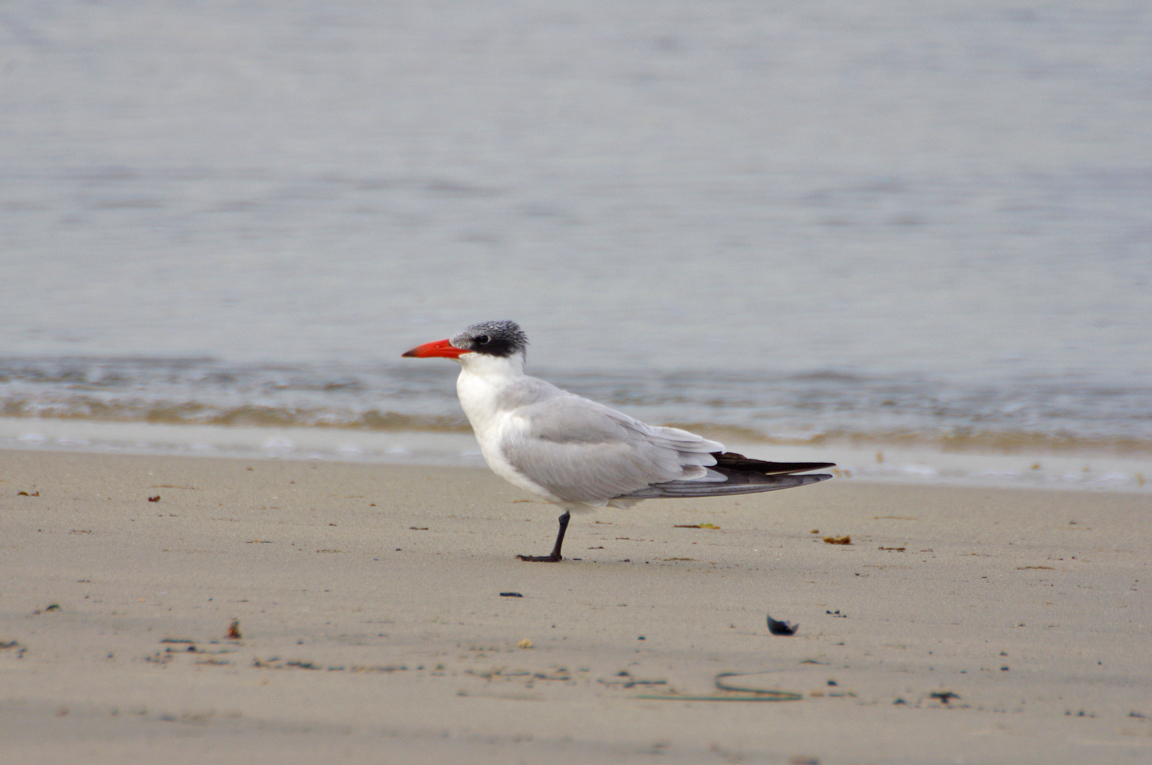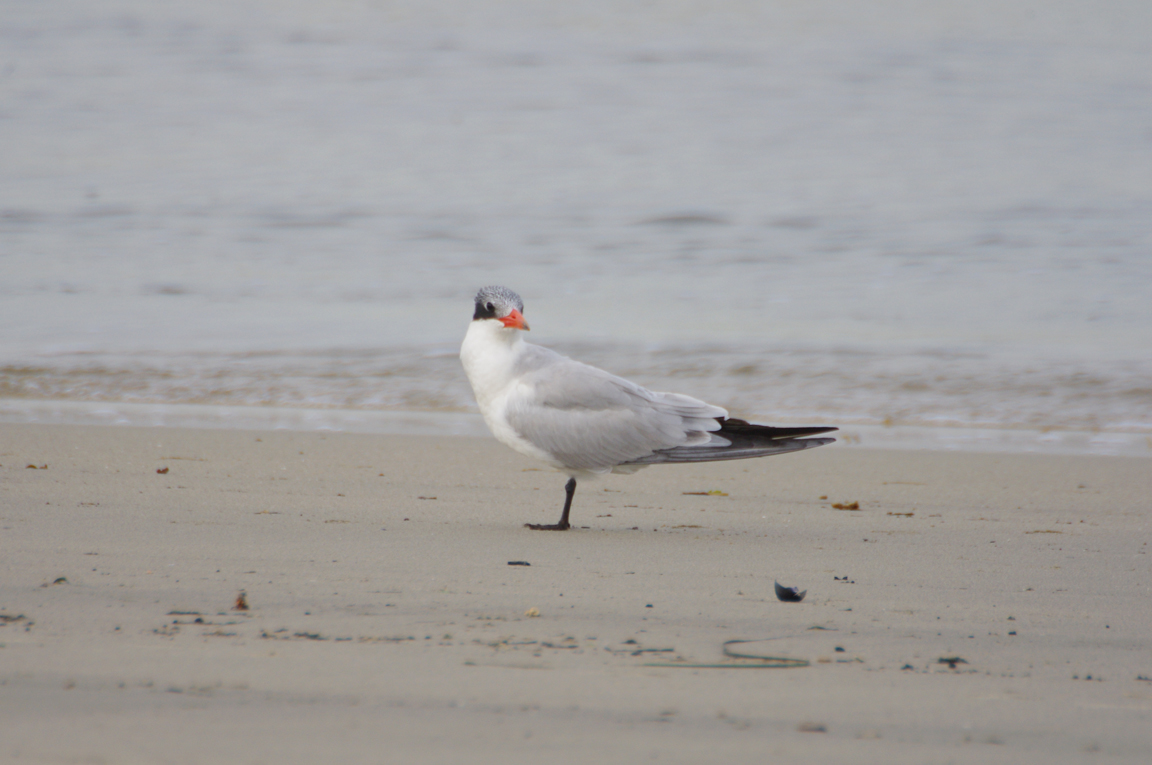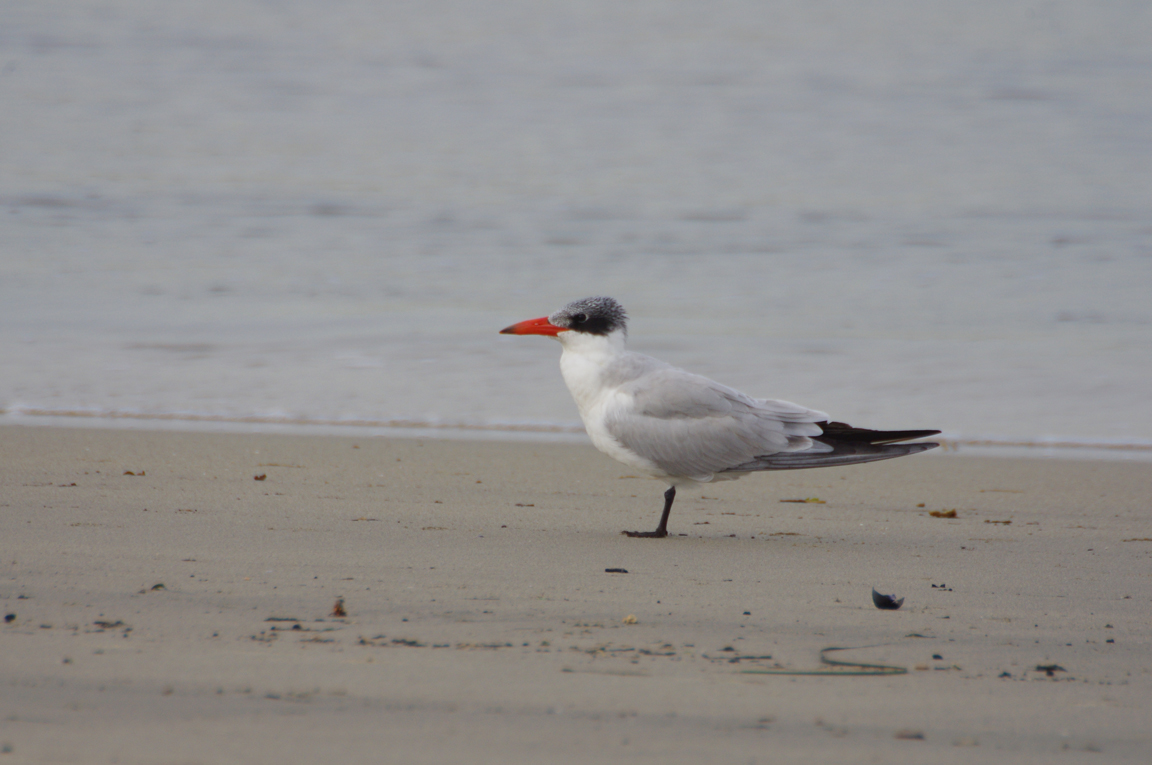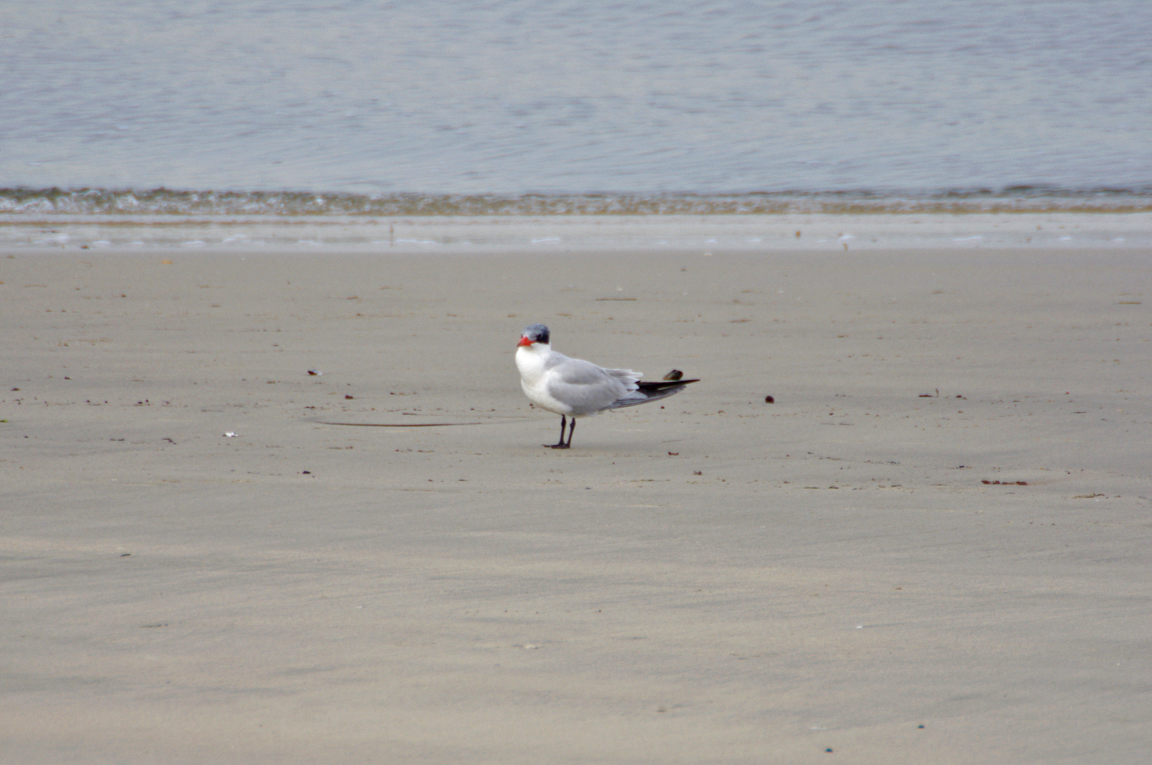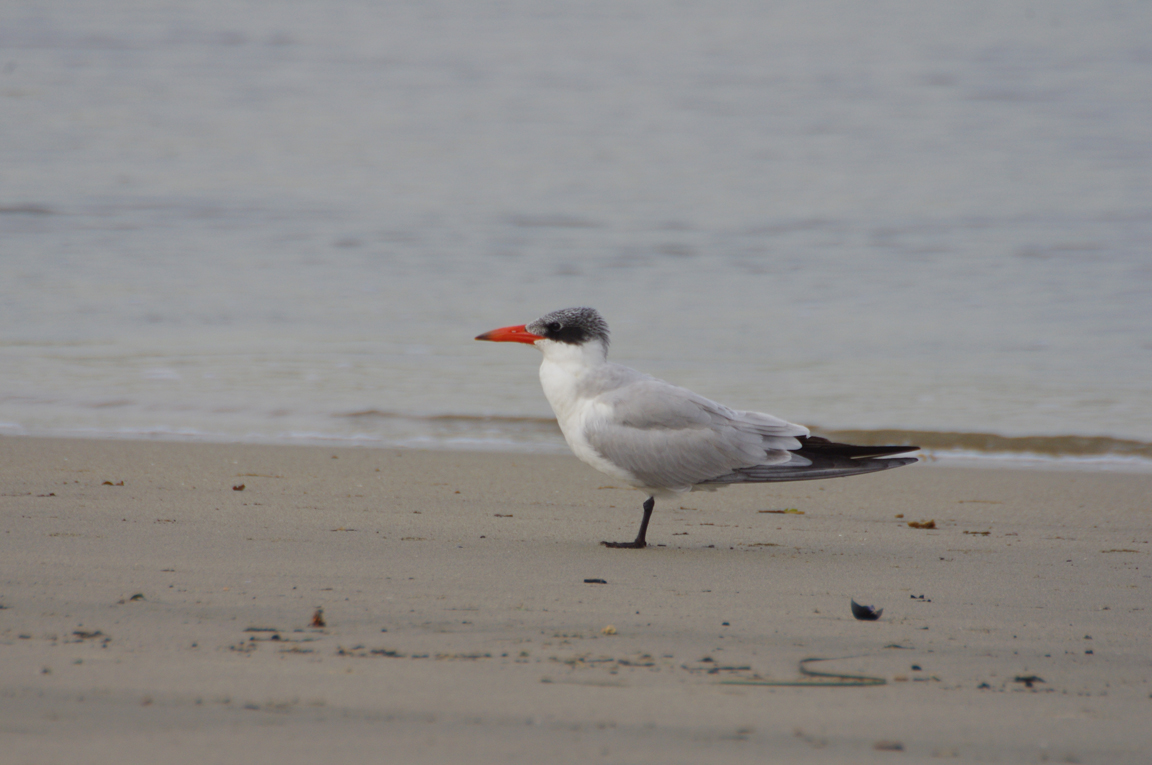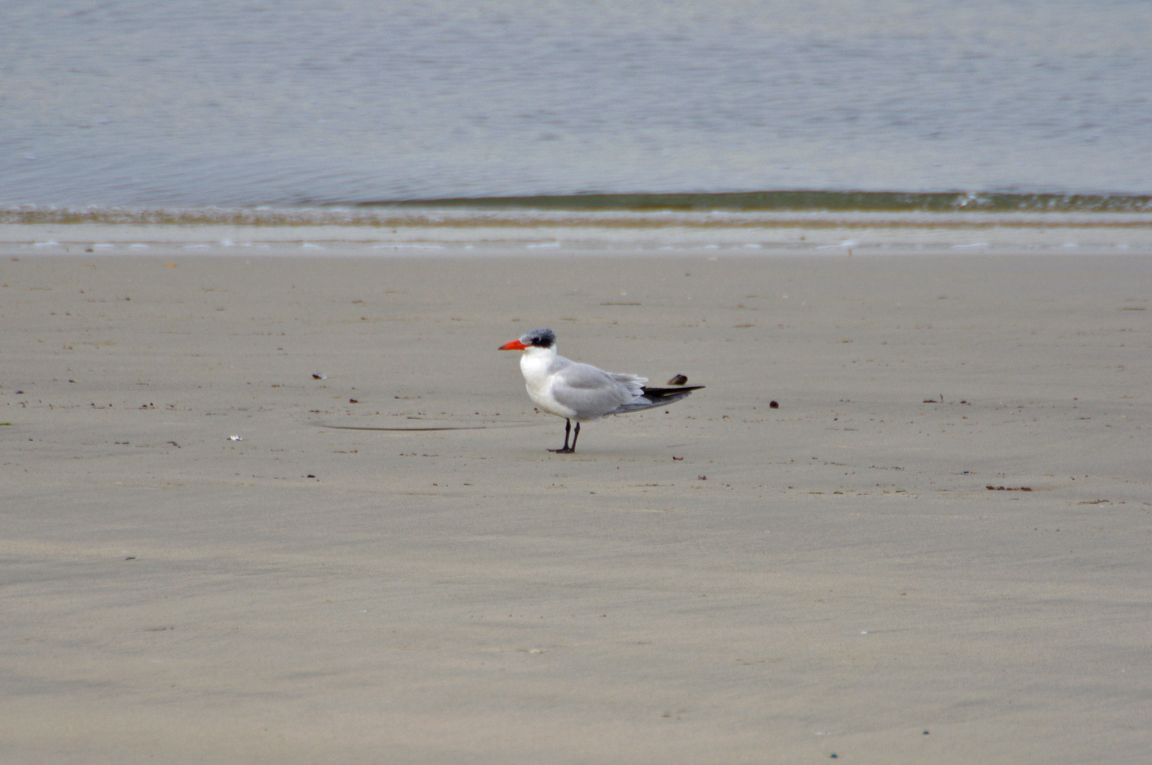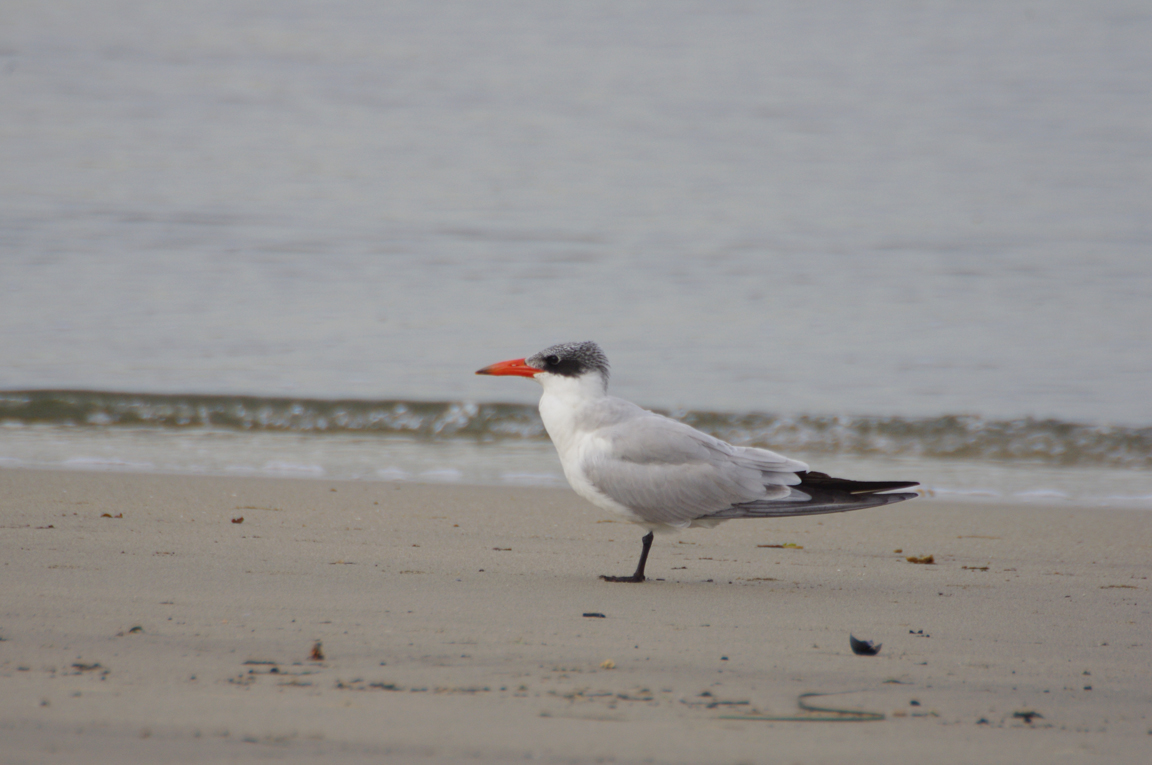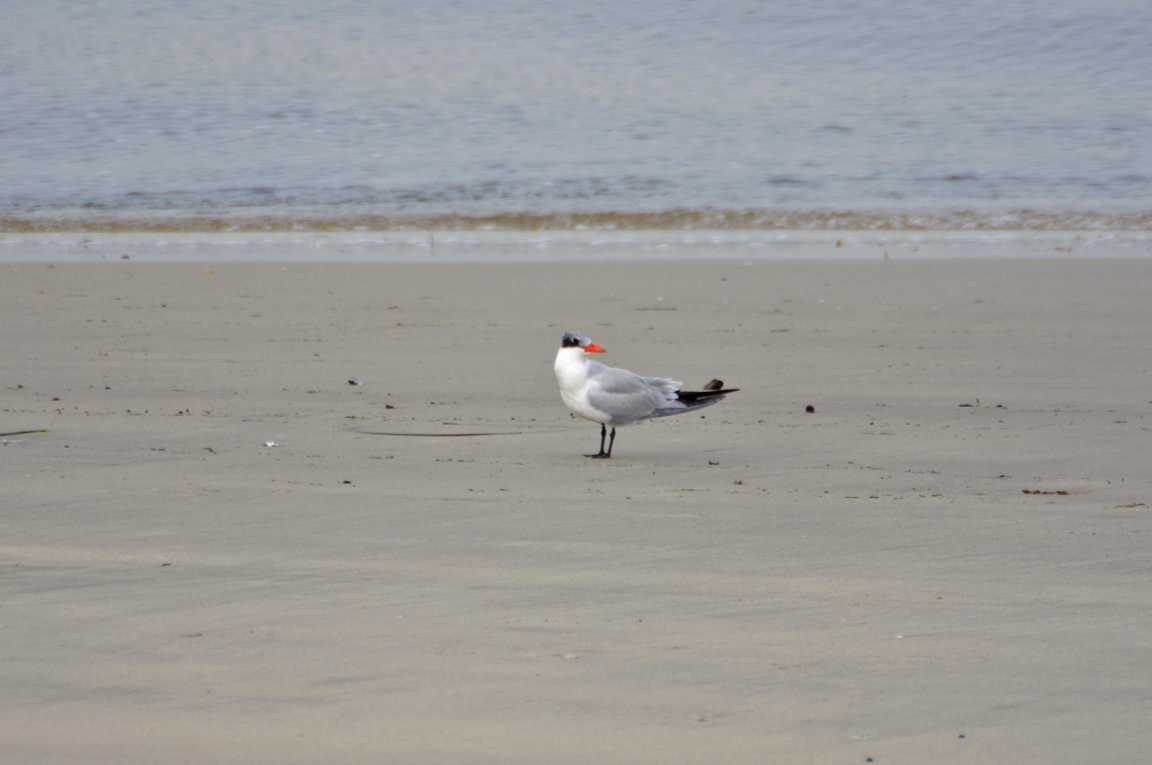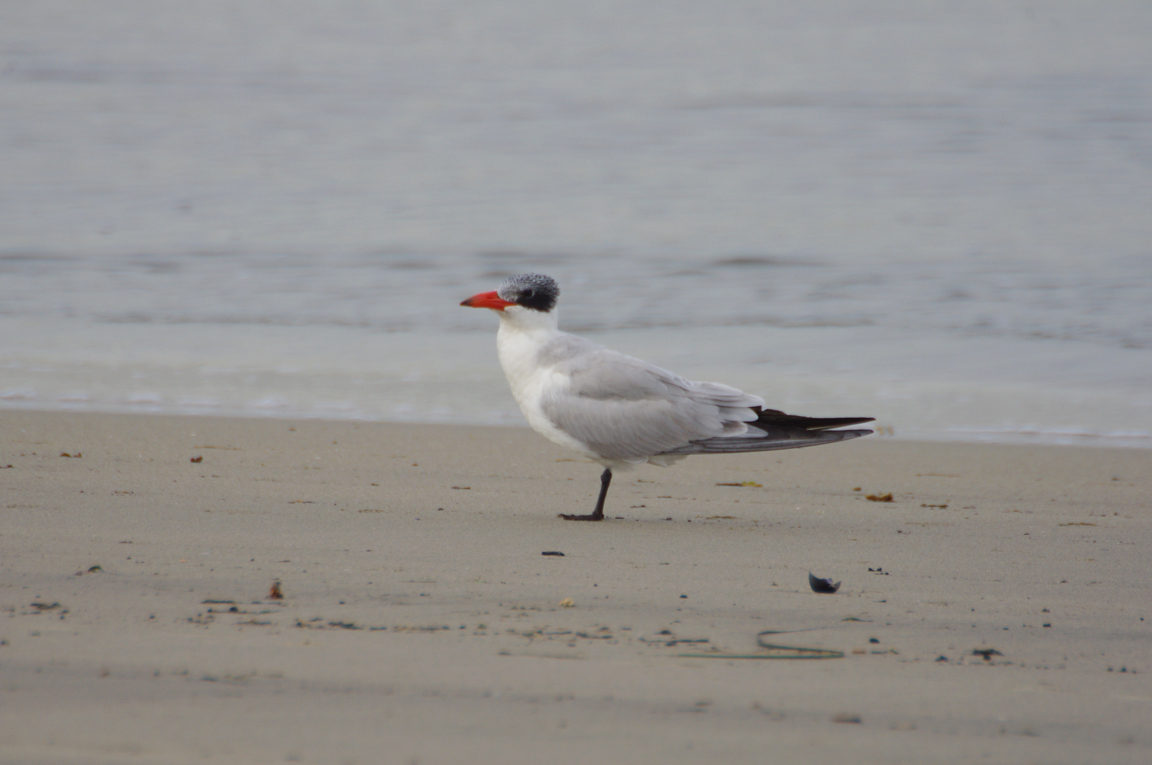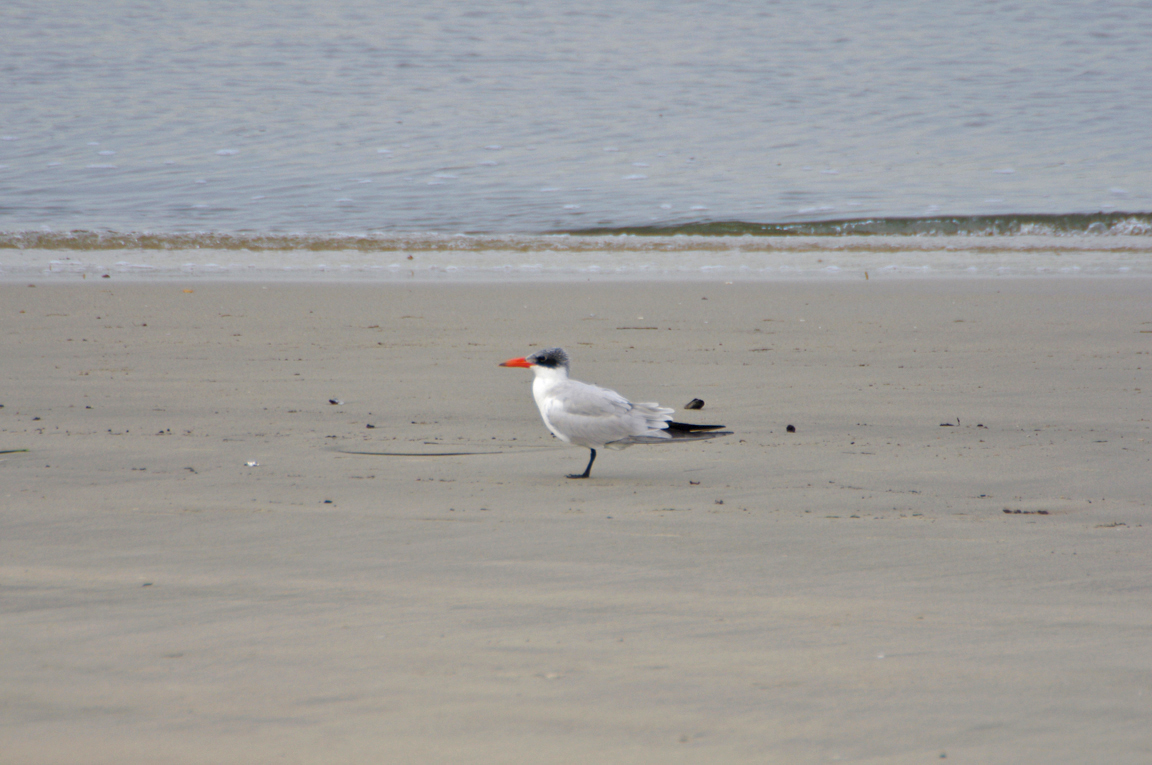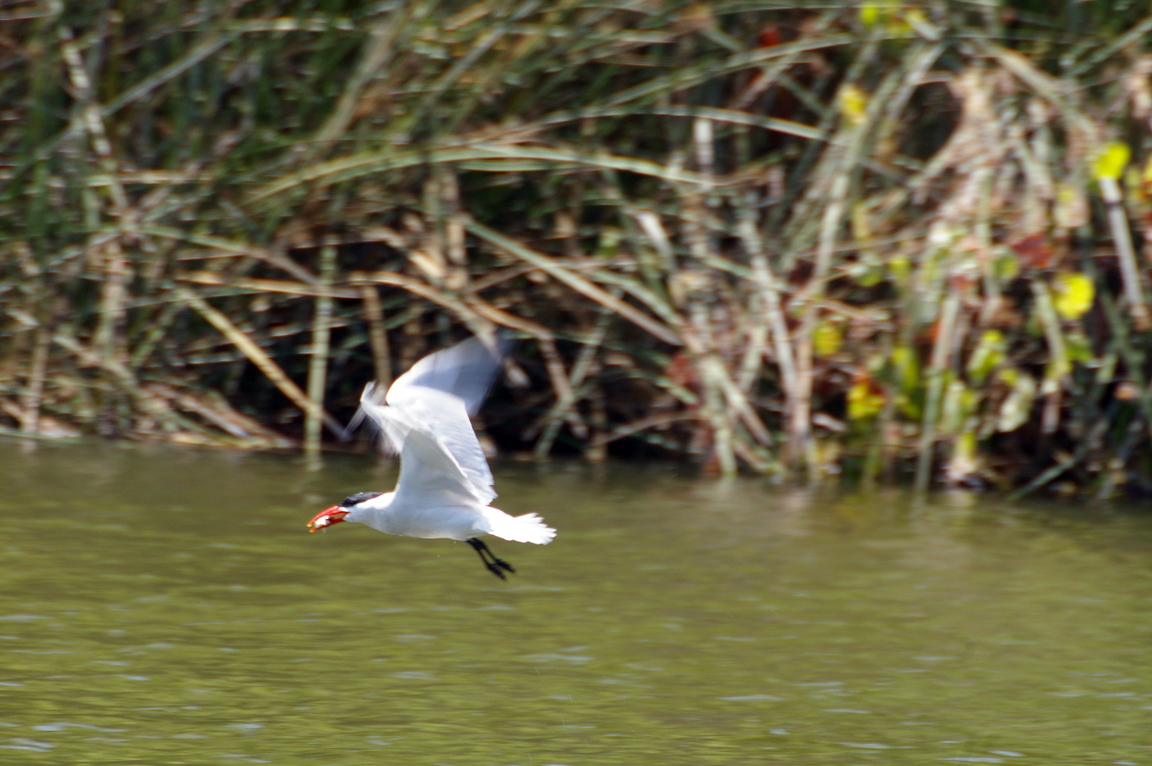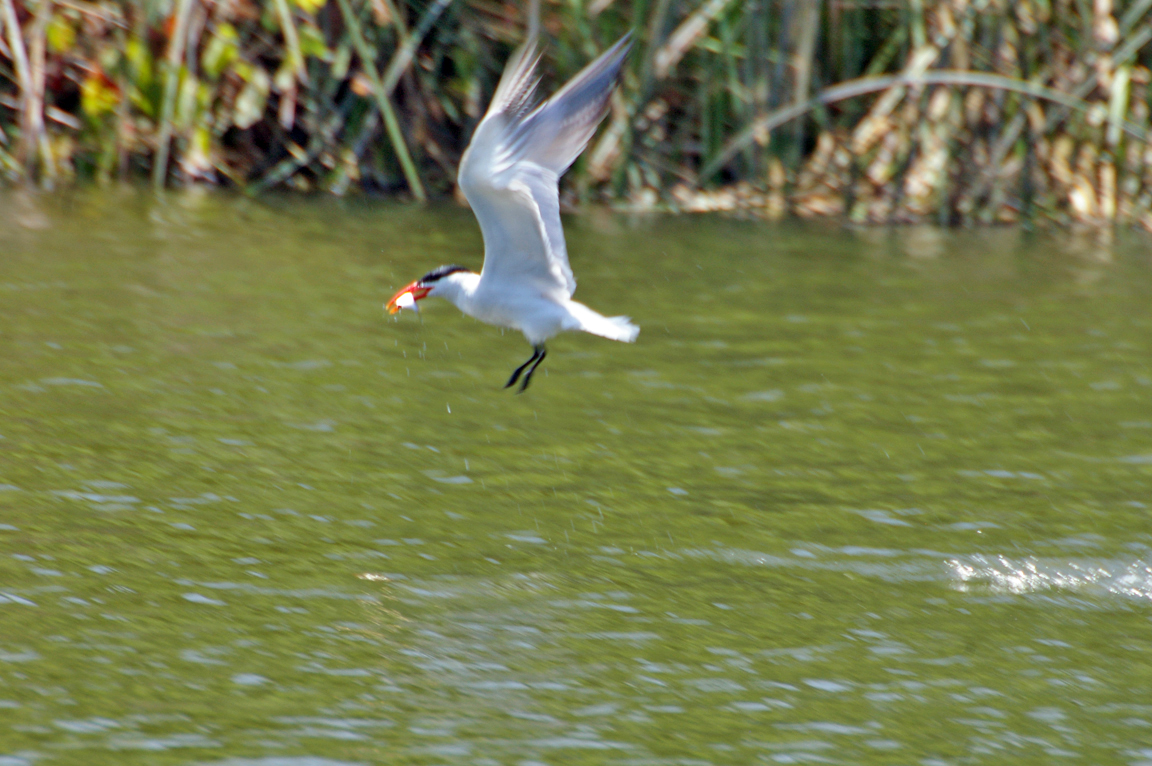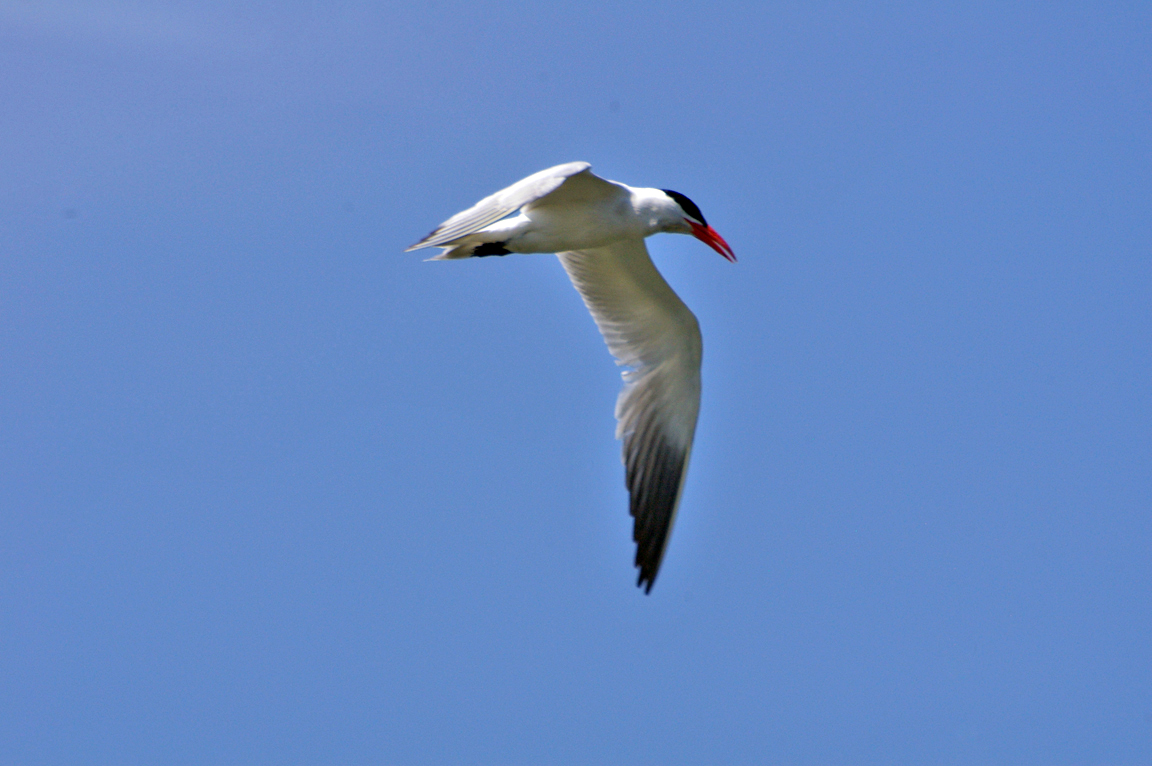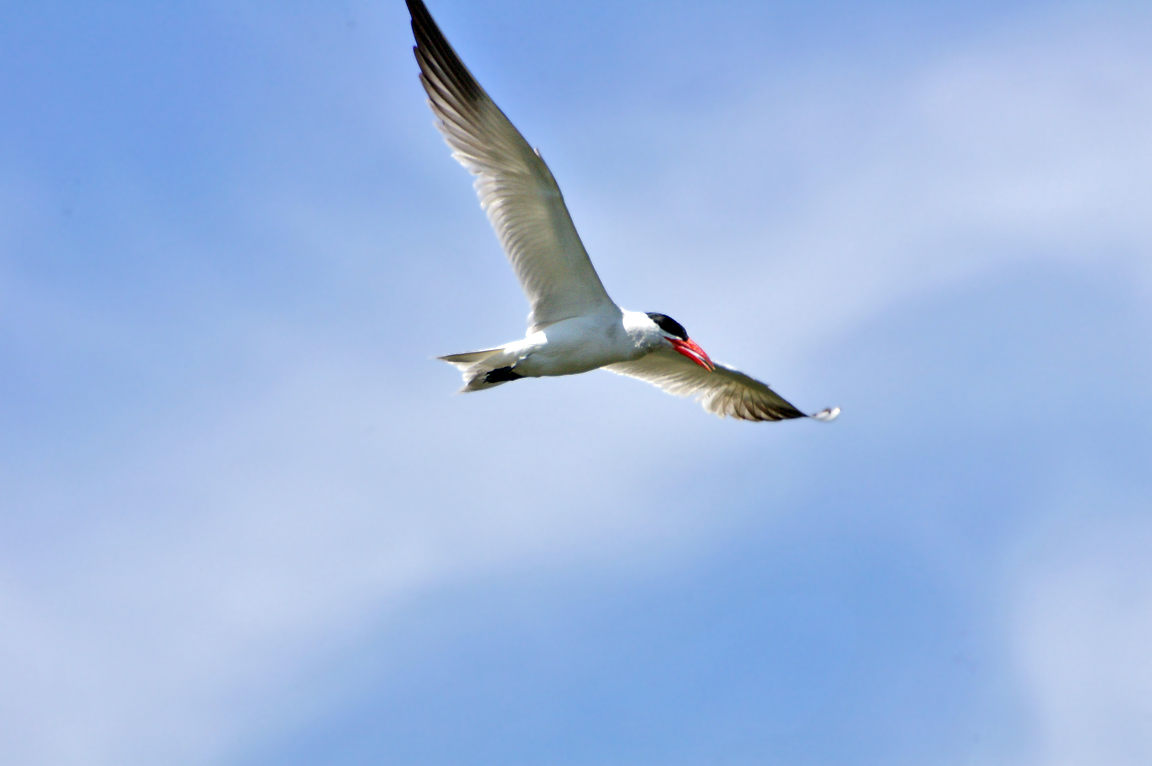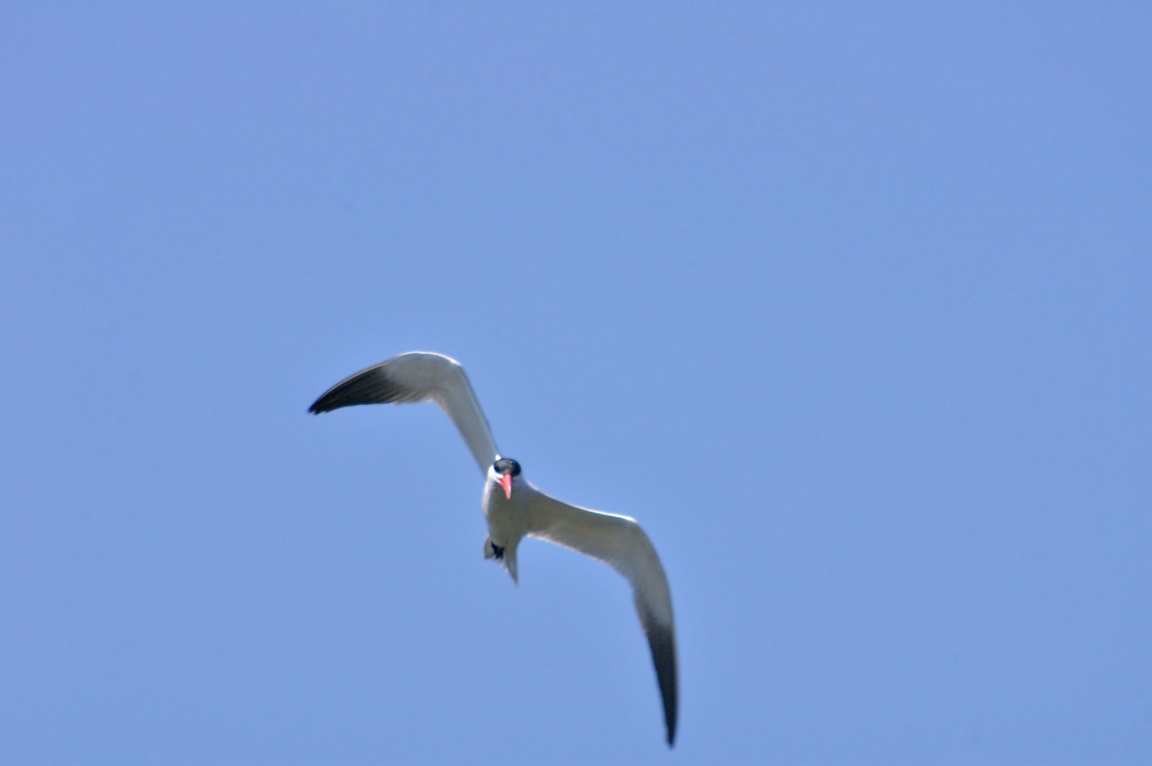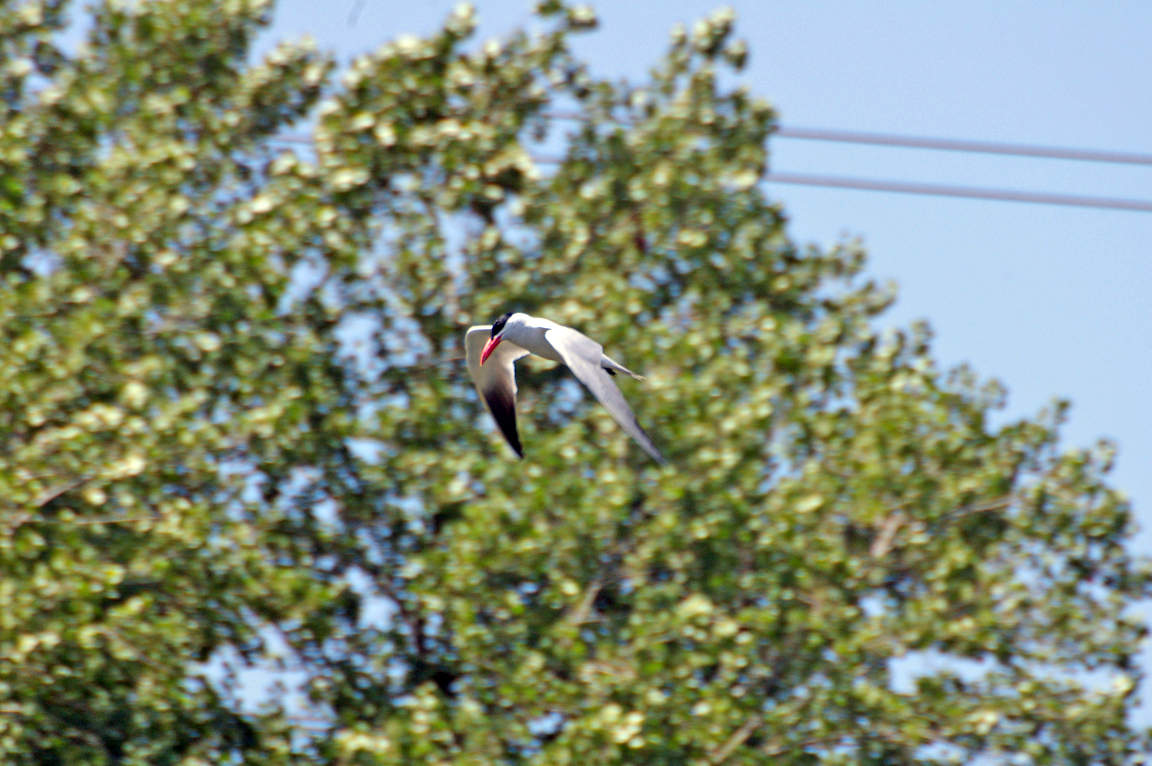|
|
|
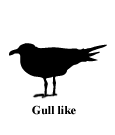 |
Caspian Tern
|
| Sterna caspia | |
As large as a big gull, the Caspian Tern is the largest tern in the world. Its large coral red bill makes it one of the most easily identified terns throughout its worldwide range.
Interesting Information
-
The oldest known wild Caspian Tern lived to be more than 26 years old. Average life span of Great Lakes Caspian Terns is estimated to be 12 years.
-
The Caspian Tern aggressively defends its breeding colony. It will pursue, attack, and chase potential predatory birds, and can cause bloody wounds on the heads of people who invade the colony. The entire colony will take flight, however, when a Bald Eagle flies overhead, exposing the chicks to predation from gulls.
-
The largest breeding colony in North America is off the coast of Oregon. Increasing numbers of terns at this site have caused problems with young salmon releases, some of them endangered species. Efforts are being made to move the colony to other areas, away from the fish stocking programs.
-
Young Caspian Terns appear to have a difficult time learning to catch fish efficiently. They stay with their parents for long periods of time, and are fed by them even on the wintering grounds. Many young terns do not return to the nesting grounds for several years, remaining instead on the wintering areas.
Description
Adult Description
-
Length Range: 48-58 cm (19-23 in)
-
Weight: 635 g (22.4 oz)
-
Size: Large (16 - 32 in)
-
Large, gull-like tern.
-
Black cap.
-
Body white.
-
Bill large, thick, and brilliant red with dark tip.
Sex Differences
Sexes Similar
Immature
Juvenile has blackish crown, black edging to back feathers.
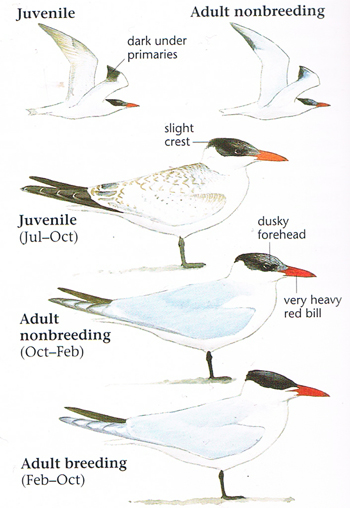
Photo taken from: The Sibley Field Guide by David Allen Sibley
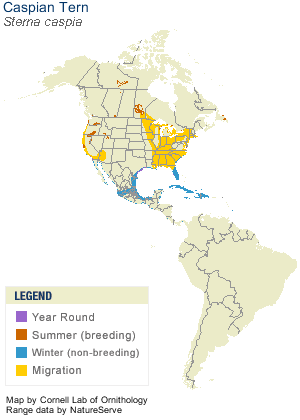
© 2003 Cornell Lab of Ornithology
|
Habitat |
|
|
Behavior |
|
Flies over water with bill pointing down; plunges into water to catch fish. |
|
Food |
|
Almost entirely fish; occasionally crayfish and insects. |
Taxonomy
| Kingdom: | Animalia |
| Phylum: | Chordata |
| Subphylum: | Vertebrata |
| Class: | Aves |
| Order: | Charadriiformes |
| Family: | Laridae |
| Subfamily: | Sterninae |
| Genus: | Sterna |
| Species: | Sterna caspia |
Similar Species |
|
|
Bird Sound |
|
Call a raspy "kowk." Juvenile begging call a high pitched whistling; heard frequently during migration and in winter. |
|
Eggs look like this |
|
Photo taken from: ARCTOS Collaborative Collection Management Solution |
